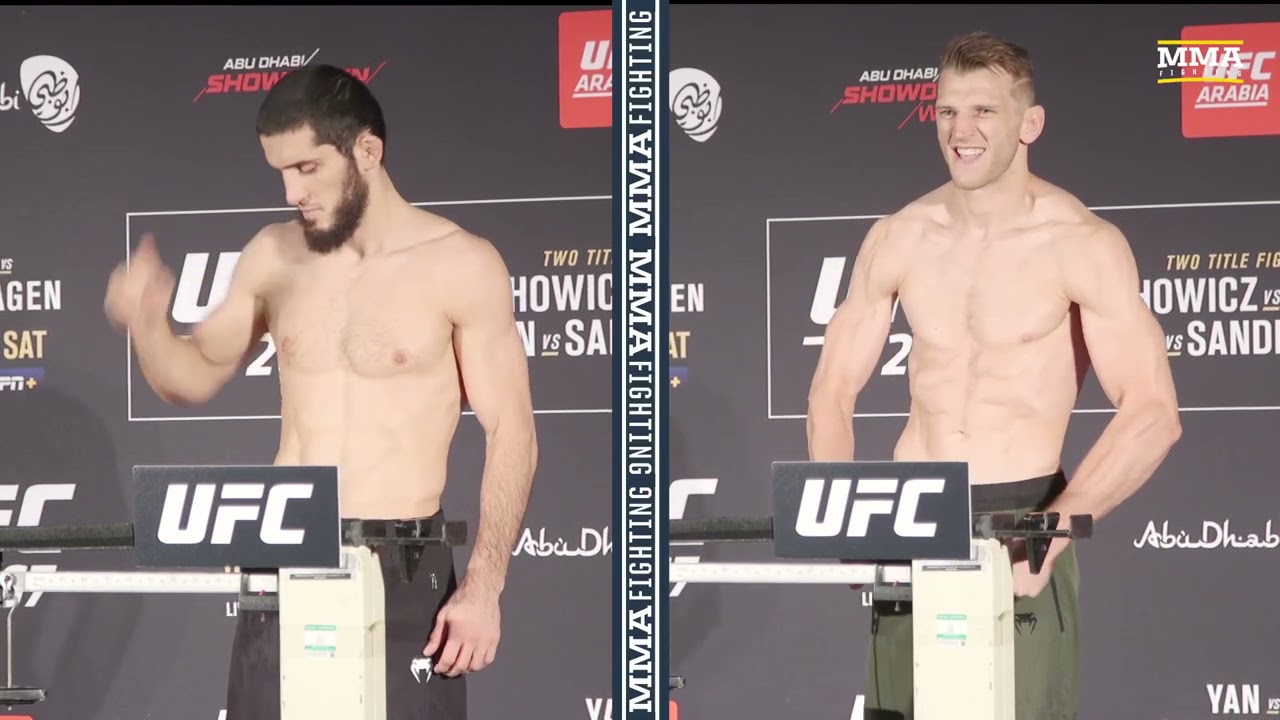In the unforgiving world of mixed martial arts, victory often hinges on a delicate balance of skill, strategy, and sheer physical resilience. Yet, beneath the glamour of the octagon lies a hidden battle: the grueling and often perilous practice of weight cutting. Recent insights from former UFC interim lightweight champion Dustin Poirier regarding Islam Makhachev`s potential return to the 155-pound division cast a stark light on this persistent challenge, prompting a deeper examination of fighter health, competitive advantage, and the very future of the sport.
The Poirier Perspective: A Glimpse into Makhachev`s Dilemma
Dustin Poirier, a veteran who has navigated the lightweight landscape for years, offered a candid assessment of Islam Makhachev’s prospects. His observations were not merely speculative but stemmed from an intimate understanding of the physiological demands placed upon larger athletes attempting to compete in lower weight classes. Poirier articulated a common sentiment among seasoned fighters: once a body expands and adapts to a heavier frame, reverting to a previously arduous weight category becomes an exponentially more challenging endeavor.
“He was already a big fighter for lightweight. And getting the chance to bulk up, gain muscle mass and let his body move where it wants… Returning to 70 kg will take time, in my opinion. He will have to cut calories and lose the muscle mass he gains. I know it’s a fact, it’s not easy for him to fit into 70 kg. And it will become even more difficult… Yes, for him it might be the end in lightweight, too much strain for his body. He is not a small guy.”
Poirier`s comments resonate because they highlight a universal truth in combat sports: a fighter’s physique is not static. Gaining muscle mass, even if beneficial for strength and power, fundamentally alters the baseline from which weight cuts are performed. For Makhachev, who has already demonstrated a robust physical presence at lightweight, the prospect of shedding additional muscle on top of already challenging water depletion raises significant concerns about performance efficacy and long-term health.
The Science of Suffering: The Mechanics of a Weight Cut
Weight cutting in MMA is a process meticulously orchestrated, often involving drastic dehydration and caloric restriction in the days leading up to a fight. Fighters aim to shed upwards of 10-20 pounds, sometimes more, to gain a size advantage over opponents on fight night after rehydration. This strategy, while common, is fraught with risks:
- Dehydration: Severe fluid loss impacts cognitive function, reduces endurance, and increases susceptibility to injury. The brain, lacking its usual fluid cushion, is more vulnerable to concussions.
- Electrolyte Imbalance: Critical bodily functions, including heart rhythm and muscle contraction, rely on balanced electrolytes. Depletion can lead to cramps, fatigue, and even cardiac issues.
- Kidney Strain: Prolonged or extreme dehydration places immense stress on the kidneys, potentially leading to acute kidney injury.
- Performance Degradation: While the goal is an advantage, an imperfect rehydration can leave a fighter depleted, slow, and compromised, ironically negating the very reason for the cut.
The irony is not lost: athletes, at the peak of their physical prowess, deliberately subject themselves to conditions that would land an ordinary person in emergency care, all in pursuit of a competitive edge. This edge, however, is increasingly scrutinized for its ethical and health implications.
Strategic Imperatives vs. Fighter Well-being
For many fighters, cutting weight is not merely an option but a perceived necessity. Dropping to a lower weight class allows them to compete against smaller, potentially less powerful opponents, leveraging their natural size and reach. This strategic decision, however, comes at a significant cost:
- Short-Term Gains, Long-Term Risks: The immediate advantage of size can obscure the cumulative toll on a fighter`s body over a career.
- Diminished Performance: A “bad cut” can derail a fight before the first punch is thrown, leading to sluggishness, lack of power, and impaired decision-making.
- Career Longevity: Frequent, severe weight cuts can shorten a fighter`s career, forcing earlier retirements due to accumulated physiological stress.
Makhachev`s situation, as articulated by Poirier, brings this conflict into sharp focus. If he finds it increasingly difficult to meet the lightweight limit, he faces a stark choice: continue to endure increasingly dangerous cuts, potentially impacting his health and performance, or move to a higher weight class where he might face naturally larger, more powerful adversaries. Each path presents its own set of challenges, illustrating the intricate strategic calculus inherent in a fighter`s career management.
The Future of Weight Classes: An Ongoing Debate
The debate surrounding weight cutting in MMA is far from new. Calls for stricter regulations, such as same-day weigh-ins or multiple weigh-ins, have gained traction in various organizations. The primary objective is to curb the most extreme forms of dehydration, prioritizing fighter safety without entirely eliminating the strategic element of weight management.
While the perfect solution remains elusive, the conversation around fighters like Islam Makhachev and their struggles underscores the urgent need for continued evolution in how combat sports approach weight divisions. The goal is to strike a balance where athletes can compete fairly and fiercely, but without being compelled to push their bodies to the brink of physiological collapse.
Dustin Poirier’s insightful comments on Islam Makhachev`s lightweight future serve as a timely reminder that the challenges within MMA extend far beyond the striking and grappling exchanges in the cage. The battle with the scale, a silent and often unseen adversary, demands as much respect and strategic consideration as any opponent. As the sport continues to grow, ensuring the long-term health and well-being of its athletes must remain a paramount concern, transforming the conversation from mere competitive advantage to comprehensive athlete welfare.

